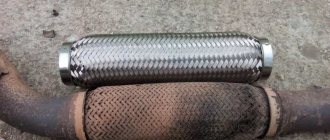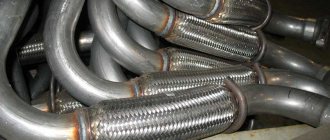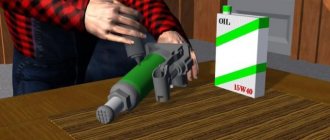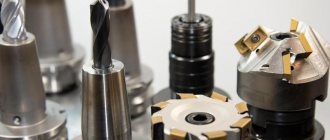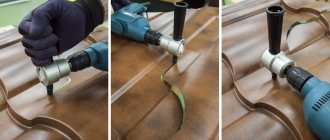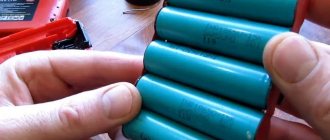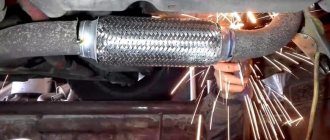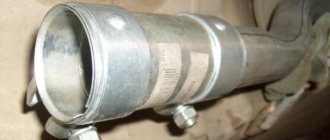Exhaust gases from passenger cars are discharged into the atmosphere behind the rear bumper. This is due to the need to minimize the likelihood of them being sucked into the cabin. But in most cases the engine is located at the front, so the pipe with mufflers is too long to remain rigid. To give flexibility, hinged or braided connecting inserts are built into it.
How does the muffler corrugation affect engine performance?
Strictly speaking, this connection has not been corrugated for a long time. Corrugation is created on sheet metal to give it anisotropic properties, that is, increasing rigidity in one direction of force application and decreasing it in the other.
In a modern car, corrugations (bellows) in their pure form are no longer used in the exhaust system. Here they place wicker welded inserts, called corrugations by inertia. But some of them actually have elements that operate on the principle of corrugation.
The emergence of such devices allows us to solve a number of problems:
- the flexible insert significantly reduces dynamic loads on the exhaust tract, reducing the likelihood of cracks;
- The corrugation allows some displacement of the inlet and outlet flanges in space, axial. radial and angular, which reduces the requirements for the accuracy of manufacturing large-sized parts, and therefore their cost;
- changes in the position of the engine, both as a result of vibrations or reactive moments, and long-term, due to wear of elastic fasteners, are compensated by deformation of the flexible connection, without causing further damage.
A serviceable flexible coupling has an extremely positive effect on engine operation, reducing the overall vibration load of the vehicle, while in no way interfering with the free exit of exhaust gases.
Troubles begin as the corrugation wears out and breaks down;
- exhaust resistance increases due to the appearance of foreign parts in the flow;
- external noise increases, a burnt out or torn coupling allows gas to pass out to the muffler and resonator;
- the fastening structure of the exhaust tract parts is distorted, they can begin to touch the road and break.
Flexible couplings are quite reliable, which is determined by the features of their design.
What to pay attention to
What should you consider before installing a new corrugation? Try to understand the reason for the breakdown of the old corrugation.
When an old part failed due to the fact that a large load was placed on it, but it could not stand it. Then this malfunction should be eliminated in the car. Otherwise, the same fate will befall the new corrugation.
For example, when the engine mount is worn out, when the rubber fasteners of the muffler are stretched. The load on the corrugation is increased, and it may well break and burn out due to the fact that it operates in a mode not intended for its functionality.
Types of corrugation
The design of couplings is determined by the requirements placed on them. The corrugation should be:
- stainless;
- withstands high temperatures of exhaust gases;
- flexible, yet durable;
- sealed.
The manufacturing process uses stainless wire weaving technology and the use of elastic molded plates.
Double braid
The simplest corrugation is made of two layers, woven in a special way. The tightly packed wire allows gases to be retained, although it is difficult to talk about complete tightness.
On the subject: Why water drips from a car muffler
But such couplings are very inexpensive and they are the most flexible and absorb vibration loads well. But they do not last long, needing frequent replacement due to the rupture of the thin wire structure.
Triple braid
All high-quality corrugations have three or more layers. Among them can be either wicker or in the form of a metal sleeve. Couplings with sleeves have the trade name Interlock or Hydra, and those simply having a multi-layer weave are called Innerbraid.
The latter type is easy to identify by looking inside the pipe. There, instead of wicker, you can see sheet stainless steel, molded in various ways to give flexibility.
Multilayer corrugations are more expensive and have less flexibility, which does not prevent them from working normally, since the exhaust system fasteners are designed for this.
You just need to keep in mind that some repair inserts are limited in the nature of the mutual movement of the flanges, for example, torsion. This must be taken into account when selecting spare parts for repairs.
Malfunctions of this exhaust system unit
There are several signs by which you can first say that the corrugation has burned out or torn. Extraneous noise, such as a sharp and deafening sound under the hood when the internal combustion engine is running, is a common sign of a malfunction of the corrugation.
If the corrugation is torn, the sound of the running motor will be very loud, and it will immediately become clear that the corrugation is full of holes.
In addition to noise, a sign may be exhaust gases inside the car. But, if there is no noise, then the corrugation was damaged slightly, for example, when the catalyst was clogged, gases accumulated and they made a hole in the corrugation.
In all cases, the corrugation must be replaced.
Do-it-yourself muffler corrugation replacement
Not all machines provide for corrugation replacement. Typically, manufacturers try to force the car owner to buy a section of pipe assembly, sometimes along with a resonator. But repair corrugations are sold, and replacing them is not difficult, although solid plumbing skills will be required.
The situation is complicated by the fact that the entire exhaust system fasteners are usually heavily corroded, and there is little that can be done to disassemble them without breaking them. When starting work, you need to imagine what might be required in the worst case scenario.
The corrugations themselves are standardized by the diameter of the pipe holes and the length of the entire structure. The required article can be selected in the catalogs of trading organizations, knowing the original part number. Or measure the diameters and lengths yourself, for which an inspection hole, a ruler and a caliper are enough.
Welding
Almost always, elastic inserts are changed using welding. You can cook with an electrode, but this art is in little demand now; everywhere they use a semi-automatic wire cooker in a carbon dioxide environment. Even beginners can cook with it easily.
The section of the exhaust system containing the corrugation is removed from the car and unfolded to remove the old coupling. The cutting lines are marked according to the dimensions of the new part. The cut is made with a grinder, a thin disk, strictly perpendicular to the axis of the pipes.
The new part is tacked to the cleaned ends of the pipes in compliance with the geometry of the part, after which it is hermetically sealed. Installation is carried out in the reverse order, and it is better to replace with a new one all available fasteners that are already damaged by corrosion.
No welding
If the design of the car provides for the replacement of the corrugation using the traditional method for overhauling the exhaust system - with round clamps, then the owner is lucky; he will not need welding. Although it is sometimes simply impossible to unscrew rusted nuts, so an angle grinder is most likely needed.
The connection is soaked with penetrating compounds and disassembled. Before assembly, the joints are coated with a special high-temperature sealant for the exhaust system. It is special ones, since you cannot believe the promises on the labels of ordinary silicone sealants; they will not withstand any “1500 degrees”.
It is quite possible to convert the permanent connection of the corrugation with pipes into a collapsible one for clamps. Other joints in the exhaust system are taken as a sample. You will need pipe sections, fasteners and imagination. But it is still much easier to use welding.
With a bandage
As a temporary measure, you can bandage the broken connection. The principle of plastic reinforcement is used.
Any “cold welding” type composition can be used as a filler; all of them are made on the basis of epoxy resins. The most flexible and cheapest one is chosen, since a lot of it will be needed.
The damaged area is wrapped in a bandage, you can use a regular medical one, and it is impregnated with an epoxy compound.
After polymerization, something like a fiberglass sleeve is formed, which is not elastic, but will temporarily prevent the exhaust from entering the cabin. It will be possible to get to a place where there is a lift and a welding machine, and then replace the corrugation with a new one.
Recommendations for choosing corrugations
More often, the vibration damper is replaced at a service station, where the corresponding spare parts are sold. But if you decide to do the replacement yourself, just visit a car store and choose the appropriate part.
It is important to remember that the corrugation is not a unified part; for most machines it is developed individually. The differences are in the size of the product.
Before you go to the store, you need to clarify the required parameters. The most convenient way to do this is to install the machine above the inspection hole. When taking measurements, you should remember that the corrugation will have to be cut further than the weld.
New parts are sold with a smaller diameter to ensure secure fit and ease of welding. The vibration damper is inserted 3 cm into the pipe, which helps to repeatedly change the element without the need for design changes. After measuring the length, you need to determine the diameter using a caliper.
Taking into account the type of exhaust system, vertical or horizontal corrugations are chosen. The first one works on compression, its place is under the exhaust manifold. During operation of the motor, the part does not bend, but is vertically compressed and straightened. Durable, elastic alloys are used for production. The length of such parts is 150 mm, the diameter is 65 mm. The second works for bending, its place is under the first elbow of the receiving pipe. The length of such a spare part is 400 mm, width is 65 mm. When choosing such a bellows, you need to consider the connection option with the exhaust pipe. The horizontal type of vibration damper is more common.
Before replacement, it is recommended to cut off the faulty part with a grinder and measure the distance between the two pipes. After this, it will be easier to choose a replacement part.
Regardless of the selected product, a vibration compensator is installed with an overlap of 10 - 20 mm. This means that the new part should be approximately 20 - 30 mm longer than the old one. In addition, it is worth considering the geometry of the exhaust pipe - due to the wrong choice, the new corrugation may change the angle of the pipe or may not fit into the space.
Muffler diagram
As a rule, in the muffler, in addition to itself, there are also the following components:
- exhaust pipe;
- catalyst;
- resonator.
The gas received by the pipe exits through the intake manifold and is sent to the catalyst. This pipe is an intermediate element equipped with a corrugation that suppresses vibration of the engine, preventing it from entering the system. The load in the system itself is large, relating to both mechanical and temperature effects of thousands of degrees. That’s why cast iron and steel are used here.
The catalyst completes the combustion process of particles, and carbon monoxide is transformed into a less toxic phase. Here, the gas mixture is also purified through chemical reactions.
Front and rear mufflers
The mufflers on the vehicle are located at the very end of the system. They come in front and back. They are necessary to suppress noise, and therefore are not involved in cleaning the gas mixture. Inside they are located gratings and holes that slow down the rate of gases, simultaneously dampening vibrations. A resonant effect will not occur, because there are special materials that absorb unwanted amplitudes.
The front muffler is:
- active. With flat and simple design. They have sound-absorbing material, which tends to become clogged over time.
- reactive. With a more complex design, because they combine expansion and resonator chambers.
The rear muffler is very important, since it is it that finally removes unnecessary sound, while at the same time removing excess gas. The internal structure can be called heterogeneous, containing chambers and fillers.
Features of the structure of direct-flow mufflers
Those drivers who want to increase the power of the vehicle will like direct-flow solutions, because stock ones are not suitable for this. This type converts the exhaust gas into energy. Everything is done due to the gases escaping with a reduced level of resistance. This way the engine wastes less energy, because there is no need to overcome pressure.
Direct-flow mufflers include a perforated tube protected by a casing. The number of chambers and separators is small, and the gas flows unhindered and expands thanks to the perforated pipe structure. The outer casing is responsible for noise suppression, since it is impregnated with absorbing compounds that prevent gas resonance.

